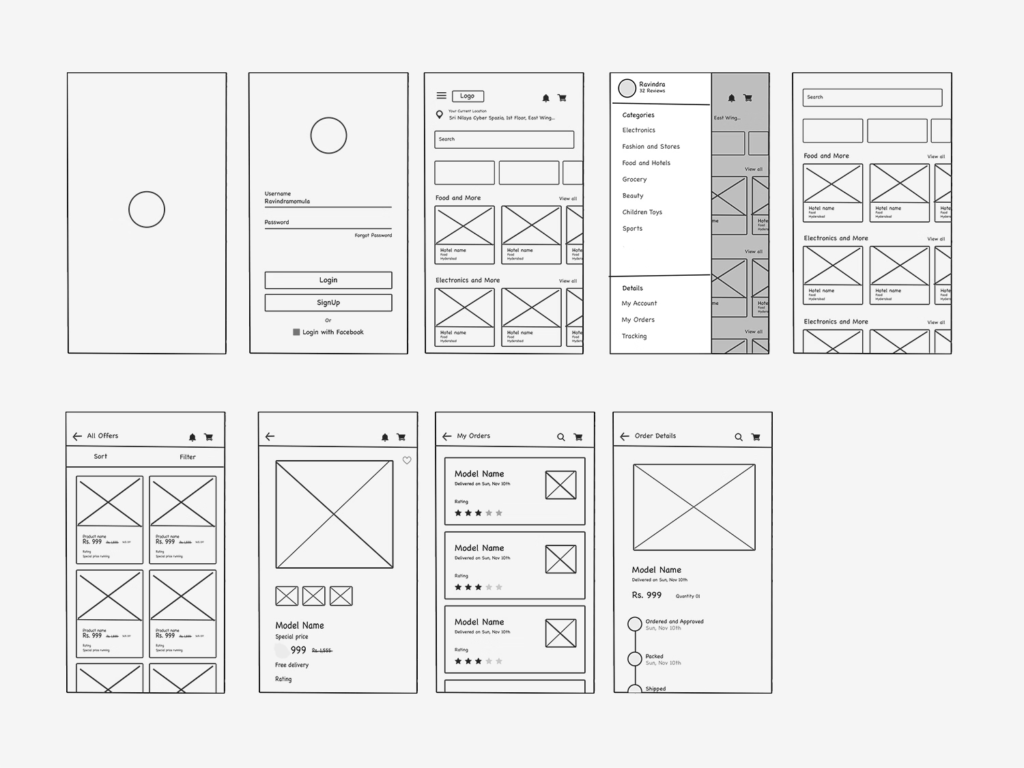Case Study: Designing for the Evolving Customer Experience at Kohl’s
https://www.jio.com/jcms/apps/
Introduction: Overview of Kohl’s Retail and Design Approach
Kohl’s is a well-established retail brand, known for offering a wide range of products including apparel, home goods, and beauty items. It has faced several challenges in adapting to the digital age, evolving customer preferences, and an increasingly competitive retail environment. As a product designer, the focus of this case study will be on how Kohl’s has approached product design and in-store experiences to remain competitive in the modern retail landscape.
Problem Statement
Kohl’s, while maintaining a loyal customer base, has struggled with increasing competition from both brick-and-mortar and online retailers. They needed to revamp both their physical product offerings and digital interfaces (such as their app and website) to align with modern consumer expectations. Specifically, Kohl’s sought to design products and experiences that are:
- User-friendly
- Efficient
- Engaging
- Consistent across online and in-store platforms
Design Challenge
The challenge Kohl’s faced was not just in delivering new products but creating a cohesive and memorable experience across various touchpoints. The physical store experience was outdated in some locations, while their digital interfaces lacked the smooth functionality that modern e-commerce users expect. Kohl’s needed to design:
- Product offerings that are stylish, functional, and appealing to diverse customer demographics.
- In-store layout and navigation that integrates technology to enhance customer experience and promote convenience.
- Digital tools and mobile app features that facilitate shopping and personalize the user journey.
Solution: Redesigning for Customer-Centric Experiences
- Product Design:
- Value-Oriented Collections: Kohl’s collaborated with designers and brands to offer exclusive lines that combined fashion with affordability. Partnerships with notable designers like Lauren Conrad and Vera Wang helped raise the brand’s fashion profile.
- Sustainability Focus: Kohl’s incorporated more eco-friendly products, promoting items made from sustainable materials. This initiative aimed to appeal to environmentally conscious customers.
- Inclusive Product Ranges: The product range expanded to cater to more diverse body types and lifestyle preferences. This was achieved through designing more sizes, inclusive lines, and unique products to appeal to a broader demographic.
- Store Design:
- Store Layout Optimization: Kohl’s revamped their stores to create an intuitive layout that guided customers more easily through sections. This included organizing product categories more clearly and adding interactive digital kiosks where customers could check stock or browse styles.
- Experiential Zones: To keep customers in-store longer, Kohl’s introduced experiential sections like “Kohl’s Cares” where customers could engage with new products, participate in limited-time experiences, and receive discounts on items tied to charity efforts.
- Digital Product and UI Design:
- Personalization: The Kohl’s app and website integrated personalized product recommendations based on user preferences and browsing history. This was intended to mirror the convenience of online shopping while keeping the core Kohl’s feel.
- Omnichannel Shopping: Kohl’s invested in ensuring a seamless shopping experience across channels. Features like “buy online, pick up in-store” and “ship from store” allowed customers to get the best of both digital and physical shopping experiences.
- Technological Integration:
- Augmented Reality (AR): Kohl’s introduced AR to its shopping experience. Customers could virtually try on clothing and accessories, improving the online shopping experience and reducing the uncertainty of sizing.
- Self-Checkout and Digital Payments: In response to evolving consumer preferences for contactless payments, Kohl’s expanded its self-checkout options and mobile payment solutions. This streamlined the in-store experience and enhanced overall convenience.
Results:
Kohl’s saw a positive impact from these design innovations.
- Increased Engagement: The revamped stores and new product lines led to an increase in foot traffic and engagement, particularly in more tech-savvy, younger demographics.
- Improved Sales: Digital tools and omnichannel services boosted both in-store and online sales. Customers were more likely to purchase when they had access to a personalized, convenient experience across channels.
- Brand Loyalty: The product designs and experiences increased customer satisfaction and loyalty, especially in areas where Kohl’s had previously lagged behind its competitors.
Conclusion:
Through thoughtful product and experience design, Kohl’s was able to enhance its market position by aligning itself more closely with evolving customer expectations. The redesign of both products and the customer experience across digital and physical platforms showcases Kohl’s ability to innovate while staying true to its value-oriented retail roots.
Prototype
